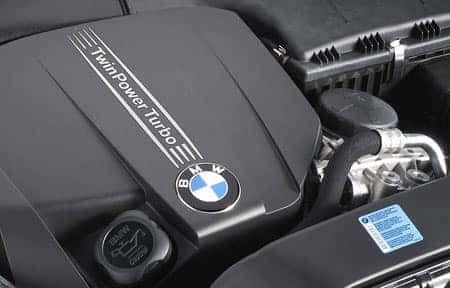Discovering the Evolution of Burning Engines in Modern Transportation Systems
As we navigate the landscape of modern-day transportation, the advancement of burning engines stands as a testimony to human resourcefulness and design prowess. The interaction of background, technology, and ecological problems in forming the trajectory of burning engines develops a story that is both insightful and compelling.
Very Early Beginnings of Combustion Engines
Just how did the idea of burning engines first emerge in the early stages of transportation advancement? The roots of burning engines can be traced back to the 17th century when the principles of interior burning were very first checked out.
The advancement minute featured the development of the initial successful gasoline-powered engine by Karl Benz in 1885 - bmw engine. This engine led the means for the advancement of the contemporary automobile, transforming transportation systems worldwide. Subsequent developments by Nikolaus Otto and Gottlieb Daimler additionally fine-tuned combustion engine technology, resulting in the mass manufacturing of autos and the rapid expansion of the transportation market
These early combustion engines were defined by their simplicity and performance, laying the foundation for the complex and effective engines made use of in modern-day transport systems. The evolution of burning engines has actually been important in shaping the method we take a trip and transfer items, marking a considerable landmark in the background of transportation advancement.
Shift to Internal Burning Technology
The change to inner burning technology noted an essential change in the evolution of transport systems. This shift began in the late 19th century, with innovators like Nikolaus Otto and Gottlieb Daimler establishing the first effective interior burning engines. These engines revolutionized transportation by using a much more effective and reliable choice to heavy steam engines and electrical motors.
One of the vital advantages of internal combustion engines was their capacity to be scaled down to suit automobiles, causing the advancement of motorcycles and vehicles. This change from cumbersome, fixed engines to compact, mobile ones paved the method for the contemporary transport systems we see today.
The transition to inner combustion technology likewise stimulated developments in gas modern technology, leading to the development of fuel and diesel as main fuel sources for lorries. This change not only made transportation more accessible to the masses however also laid the structure for the oil and gas sector to become important to worldwide economic situations.
Effect of Combustion Engines on Transport
The adoption of combustion engines in transport systems catalyzed an extensive change in the performance and rate of global mobility. Combustion engines changed transportation by providing a trusted and flexible source of power for numerous vehicles, including cars, ships, aircrafts, and trucks. This development substantially boosted the capability for people and goods to move over cross countries in much shorter period, causing boosted connection between regions and nations.
Furthermore, the prevalent use of burning engines has actually had a significant influence on economic growth. The ability to transport items effectively has spurred trade and commerce, enabling services to expand their markets and get to customers worldwide. This has actually promoted economic growth and globalization, as products can currently be carried quicker and in bigger amounts than ever.
Nonetheless, the environmental influence of burning engines can not be neglected. The combustion of nonrenewable fuel sources has brought about air contamination and greenhouse gas emissions, adding to environment modification and presenting health dangers to populaces. bmw engine. Consequently, there is an expanding focus on creating alternative propulsion modern technologies to reduce these negative effects and develop a much more sustainable future for transportation
Developments in Burning Engine Style
One notable advancement is the development of turbocharged engines, which make use of exhaust gases to drive a generator that compresses inbound air, permitting for even more gas to be burnt, resulting in enhanced power result without a substantial increase in engine size. Variable shutoff timing systems have actually likewise revolutionized engine layout by enhancing air movement at various engine speeds, improving both power and efficiency. These technologies collectively add to the continuous renovation of combustion engines in modern-day transport systems.
Future Trends in Combustion Engine Growth
With technology improvements driving continuous technology, the future of combustion engine growth is positioned to change transport systems internationally. One of the vital trends in combustion engine growth is the push in the direction of higher performance and decreased discharges. Suppliers are spending greatly in r & d to improve engine efficiency while fulfilling stringent ecological policies. This consists of the combination of innovative fuel injection systems, enhanced turbocharging techniques, and making use of lightweight products to maximize gas consumption and decrease carbon exhausts.
Another famous pattern is the adoption of hybrid modern technologies in combustion engines. Hybrid great post to read engines integrate typical burning modern technology with electrical power, using enhanced fuel performance and reduced exhausts. As the automobile sector shifts towards electrification, hybrid combustion engines are viewed as a transitional option that bridges the space between traditional lorries and fully electrical ones.
In addition, the combination of smart technologies, such as expert system and data analytics, is anticipated to play a considerable role in the future of combustion engine growth. These article source modern technologies can enhance engine performance in real-time, causing extra effective combustion processes and boosted total car efficiency. Accepting these future patterns will certainly not just drive development in burning engine development but additionally contribute to an extra ecologically friendly and sustainable transport community.

Verdict
In verdict, the development of burning engines in modern-day transportation systems has been marked by substantial developments in technology and style. From the early beginnings of combustion engines to the transition to internal combustion innovation, these engines have actually had a profound influence on transportation.
The origins of burning engines can be mapped back to the 17th century when the principles of inner combustion were first discovered. These engines changed transportation by using an extra effective and efficient alternative to heavy steam engines and electrical motors.
